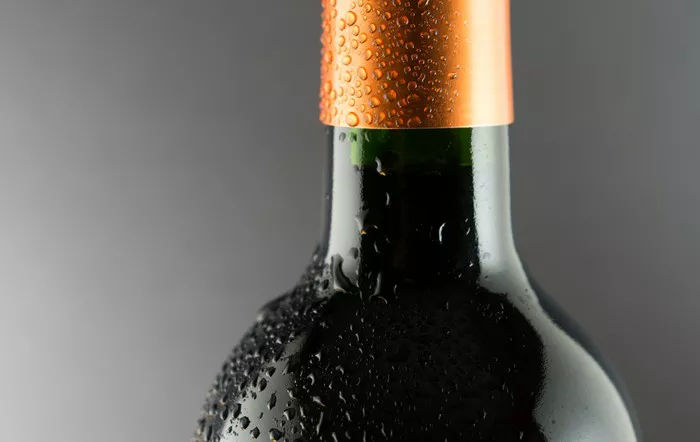Zinfandel wine, celebrated for its robust flavors and versatility, is a favorite among wine enthusiasts worldwide. However, for those mindful of their sugar intake, understanding the sugar content in Zinfandel becomes crucial. In this comprehensive exploration, we delve into the intricacies of Zinfandel wine production, its sugar levels, and the factors influencing its sweetness.
Origins and Characteristics of Zinfandel Wine
Zinfandel, known as California’s heritage grape, boasts a rich history dating back to the 19th century. While its exact origins remain debated, Zinfandel has firmly established itself as a quintessential American varietal. Renowned for its bold fruitiness, spicy notes, and versatility across a spectrum of styles, Zinfandel captivates palates with its complexity and depth.
The Winemaking Process and Sugar Levels
Understanding the sugar content in Zinfandel wine begins with the winemaking process. Like all wines, Zinfandel originates from the fermentation of grape juice. During fermentation, yeast consumes grape sugars, converting them into alcohol and carbon dioxide. However, the level of residual sugar in the finished wine depends on various factors, including the winemaker’s choices and the grape ripeness at harvest.
Harvest Timing and Sugar Accumulation
Harvest timing plays a pivotal role in determining the sugar content in Zinfandel wine. Winemakers monitor grape ripeness carefully, as sugar accumulation in grapes increases as they mature on the vine. Brix, a measure of sugar content in grape juice, serves as a key indicator for determining harvest readiness. Grapes harvested earlier typically result in lower sugar levels and higher acidity, yielding wines with crispness and vibrancy. Conversely, late-harvested grapes exhibit heightened sugar concentrations, contributing to fuller-bodied, riper wines with increased sweetness.
Winemaking Techniques and Sugar Management
Winemakers employ various techniques to manage sugar levels and achieve desired sweetness profiles in Zinfandel wine. One common approach involves arresting fermentation before yeast fully consumes all grape sugars, leaving residual sweetness in the finished wine. This method, known as “sweeter stopping,” requires careful monitoring of fermentation progress and the addition of sulfur dioxide to halt yeast activity at the desired sugar level.
Oak Aging and Sugar Integration
Oak aging serves as another influential factor in shaping the sugar content and flavor profile of Zinfandel wine. As Zinfandel matures in oak barrels, it undergoes gradual oxidation and evaporation, leading to concentration and integration of flavors. Oak aging can enhance the perception of sweetness in wine through the development of caramelized, vanilla, and spice notes, complementing Zinfandel’s inherent fruitiness and complexity.
Regional Variations and Sugar Dynamics
Regional variations in climate, soil composition, and vineyard practices also influence the sugar content in Zinfandel wine. California’s diverse terroirs, ranging from the cool coastal regions to the sun-drenched valleys, yield Zinfandel grapes with distinct flavor profiles and sugar levels. Coastal vineyards experience milder temperatures, resulting in slower grape ripening and lower sugar accumulation. In contrast, inland regions with warmer climates foster accelerated ripening, leading to higher sugar concentrations and richer, more opulent wines.
Exploring Sweetness Levels in Zinfandel Wine
Zinfandel wine encompasses a spectrum of sweetness levels, catering to a diverse array of preferences. From bone-dry to lusciously sweet, Zinfandel offerings showcase the versatility and adaptability of this beloved varietal.
Dry Zinfandel Wines: Low Sugar, High Acidity
Dry Zinfandel wines, characterized by minimal residual sugar and pronounced acidity, showcase the varietal’s fruit-forward profile without perceptible sweetness. These wines typically undergo complete fermentation, resulting in a crisp, refreshing palate and vibrant fruit expression. Dry Zinfandel offerings appeal to enthusiasts seeking a balanced, food-friendly wine with savory complexity and a clean, lingering finish.
Off-Dry Zinfandel Wines: Balanced Sweetness
Off-dry Zinfandel wines strike a harmonious balance between sweetness and acidity, offering a hint of residual sugar to complement the fruit flavors. These wines retain a touch of sweetness, enhancing the palate with roundness and depth while maintaining freshness and vibrancy. Off-dry Zinfandel selections pair exquisitely with a variety of cuisines, bridging the gap between dry and sweet preferences with universal appeal.
Sweet Zinfandel Wines: Indulgent Treats
Sweet Zinfandel wines, crafted from late-harvest grapes or through the addition of residual sugar, deliver an indulgent sensory experience brimming with ripe fruitiness and luscious sweetness. These wines captivate the palate with their opulent texture, intense flavors, and lingering finish, making them ideal for savoring as dessert wines or indulging in moments of decadence. Sweet Zinfandel offerings offer a luxurious escape, inviting exploration and celebration of life’s pleasures.
Navigating Sugar Content in Zinfandel: Tips for Consumers
For consumers seeking Zinfandel wines tailored to their sugar preferences, several strategies can aid in navigating sugar content and selecting the perfect bottle.
Read Labels and Descriptions: Pay attention to wine labels and descriptions, which often provide valuable insights into a wine’s sweetness level. Look for terms such as “dry,” “off-dry,” or “sweet” to gauge the sugar content relative to your preferences.
Consult with Experts: Seek guidance from knowledgeable wine professionals, such as sommeliers or retailers, who can offer personalized recommendations based on your taste preferences and occasion.
Sample Wines: Explore a variety of Zinfandel wines through tastings or by purchasing small bottles or sampler packs. Sampling different styles allows you to discern your preferred sweetness level and discover new favorites.
Experiment with Food Pairings: Experiment with food pairings to enhance your Zinfandel tasting experience. Certain dishes can accentuate or balance the wine’s sweetness, revealing new dimensions of flavor and complexity.
Conclusion
In conclusion, the sugar content in Zinfandel wine varies depending on factors such as harvest timing, winemaking techniques, and regional influences. From dry to sweet offerings, Zinfandel wines cater to a spectrum of preferences, delivering a diverse range of flavor profiles and sensory experiences. By understanding the nuances of sugar dynamics in Zinfandel, consumers can confidently navigate their wine selections and savor the richness and complexity of this beloved varietal.


